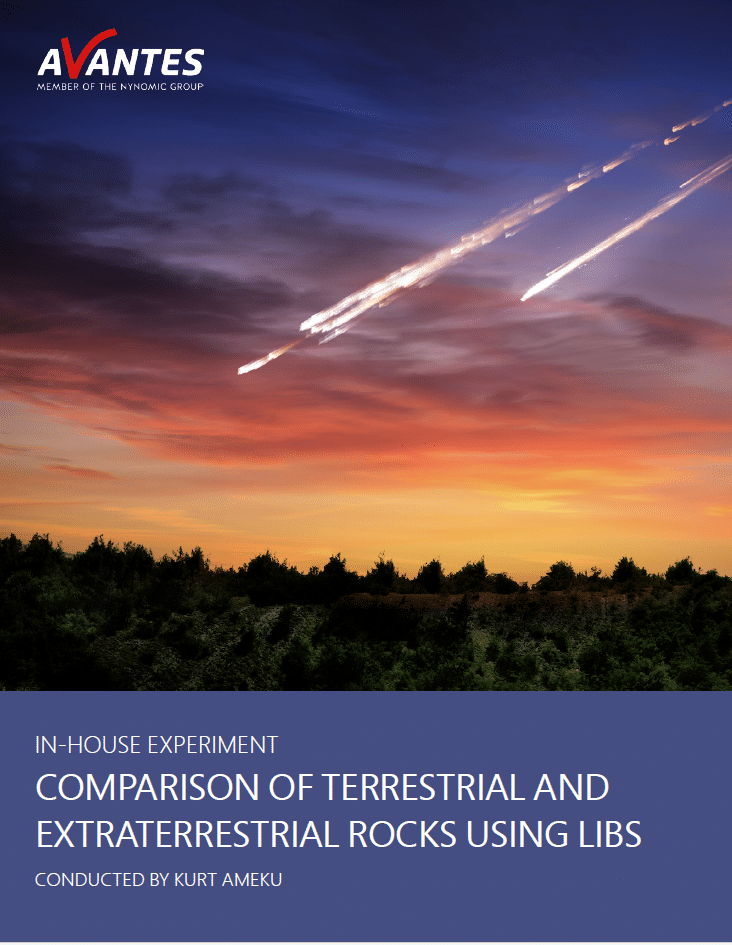Comparison of Terrestrial and Extraterrestrial Rocks Using LIBS Spectroscopy
 Background of Experiment and Application
Background of Experiment and Application
Meteorites are extraterrestrial rocks that fall to the surface of Earth, as opposed to meteors that burn up before making contact. Meteorites have played a crucial role throughout the history of our planet. Some hypothesize that the Moon formed from the remnants of a large meteorite colliding with Earth. Another hypothesis suggests that the water that covers Earth was brought here by meteorites. Perhaps most notably, it is commonly believed that the Cretaceous-Paleogene extinction event, which caused the extinction of all non-avian dinosaurs, was caused by one or several meteorite impacts. With meteorites being linked to these events, among many others, it is no surprise that they are sought-after specimens of historians, geologists, and anyone interested in what is beyond our planet. Unfortunately, determining whether a rock is a true meteorite or has been misidentified (colloquially called a “meteor-wrong”) can be a difficult process. Simple indicators may be; density, magnetism, and composition: meteor-wrongs often contain quartz, which is not found in meteorites. But in cases where terrestrial rocks are generally similar to meteorites in appearance and composition, such as amorphous rocks primarily composed of iron, more targeted methods must be used to determine the origin of a rock. One such method is laser-induced breakdown spectroscopy or LIBS.
 My Cart
My Cart 